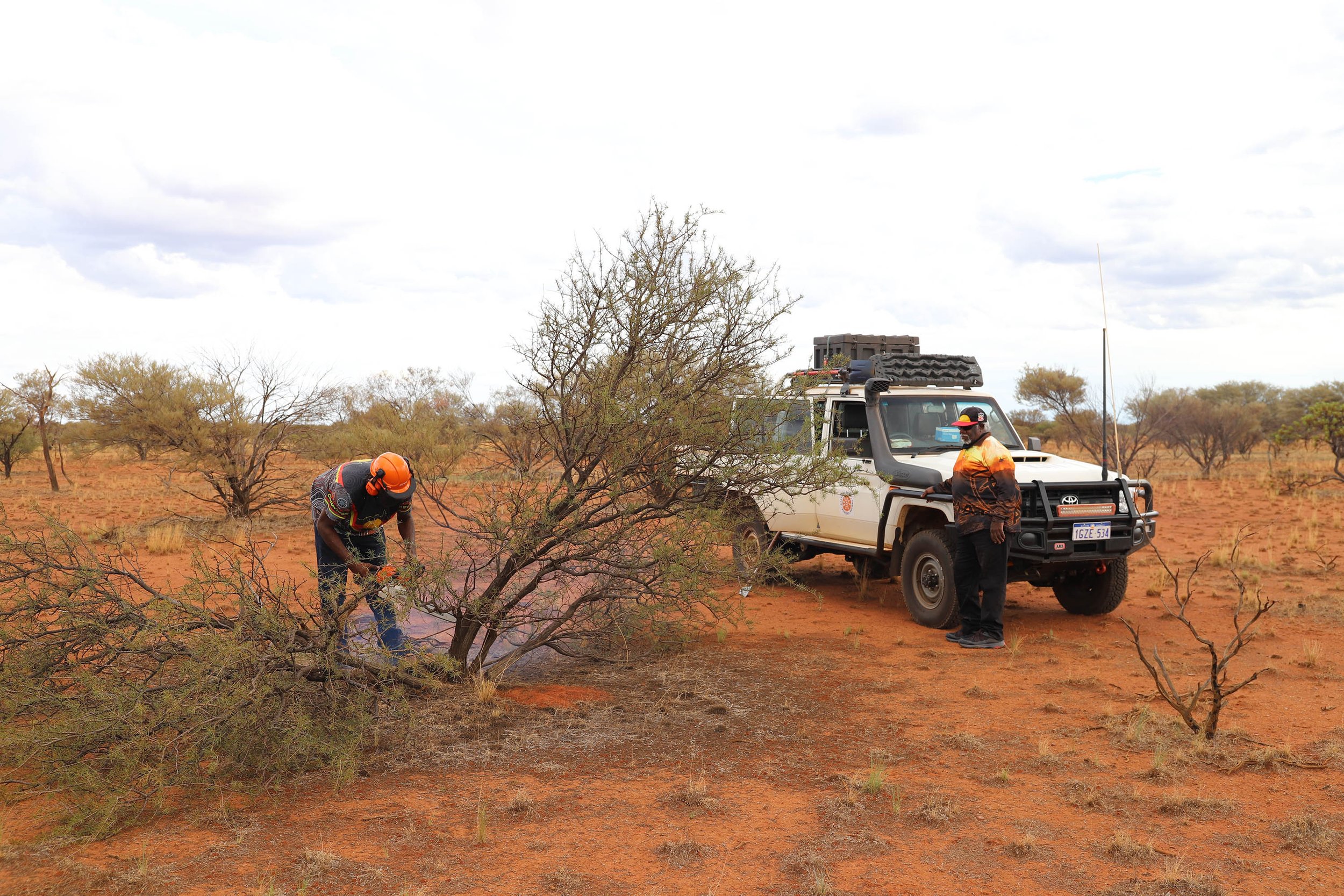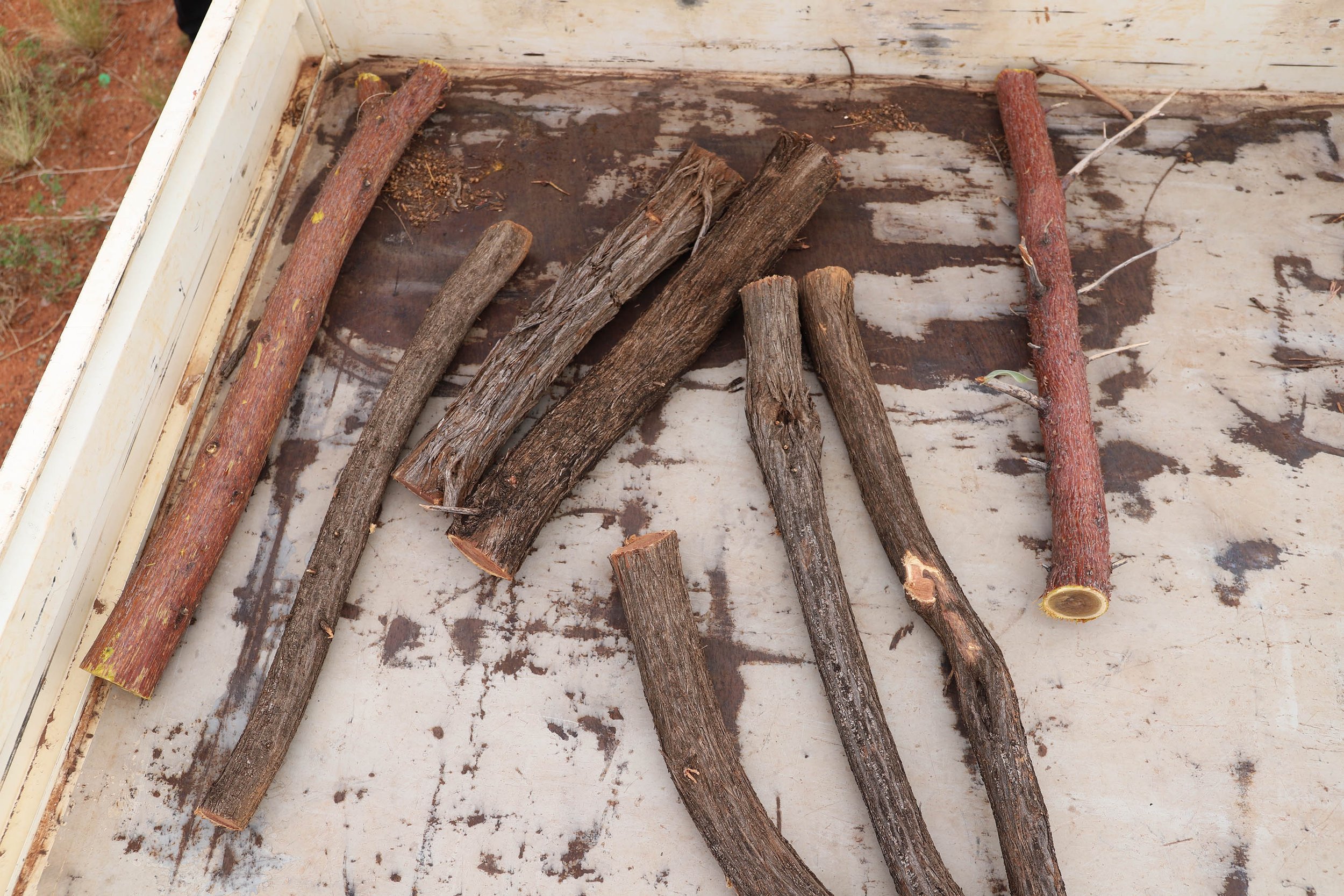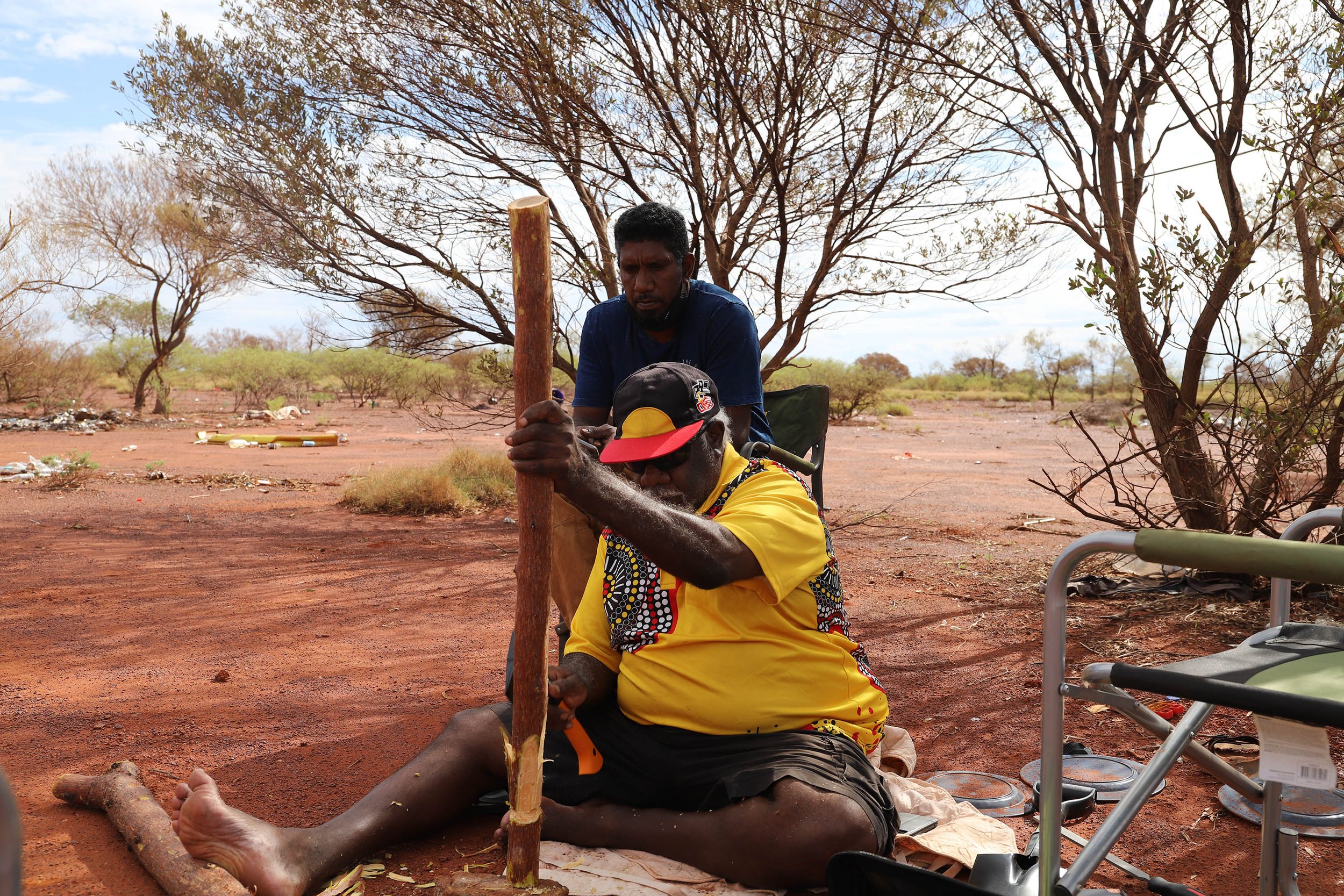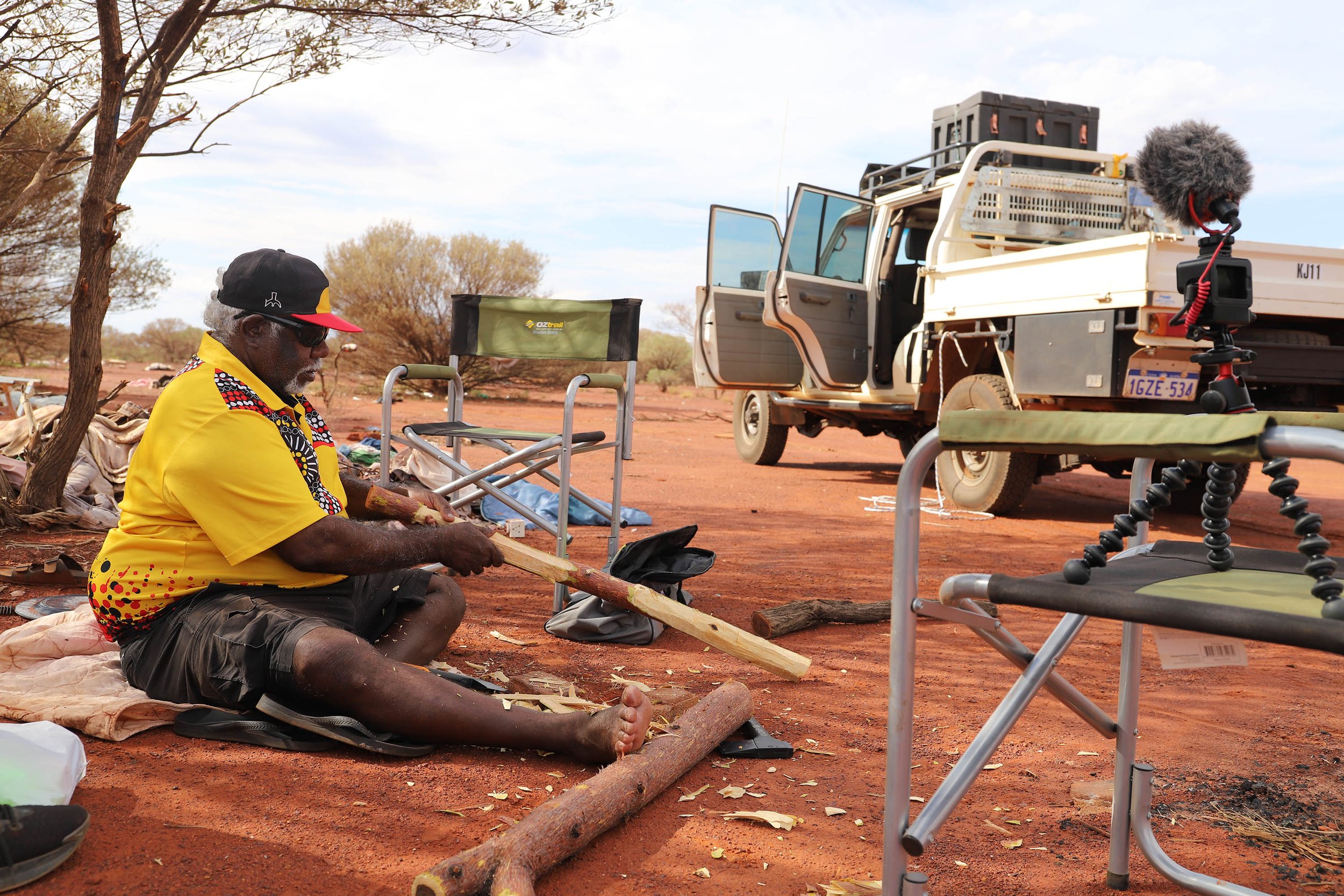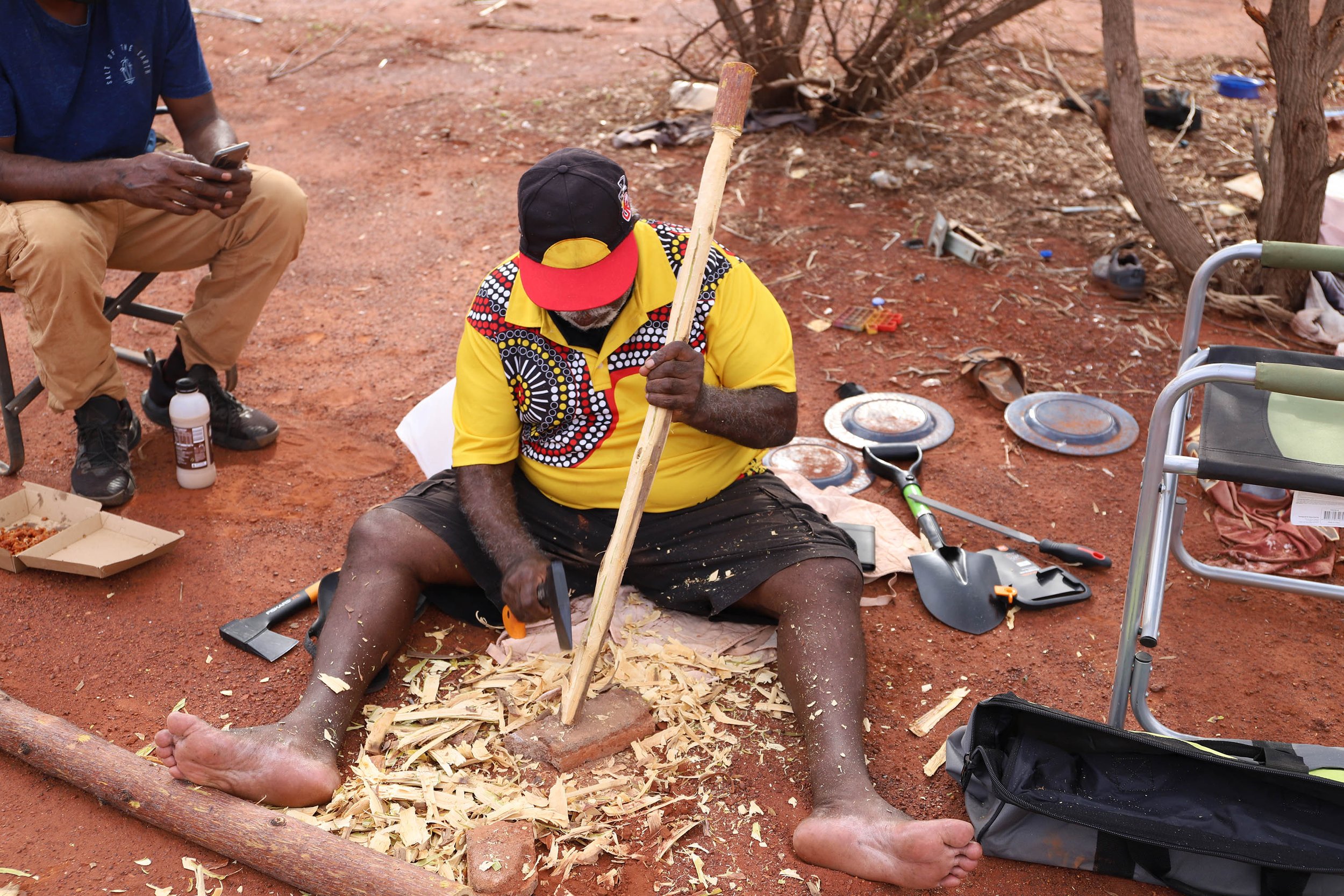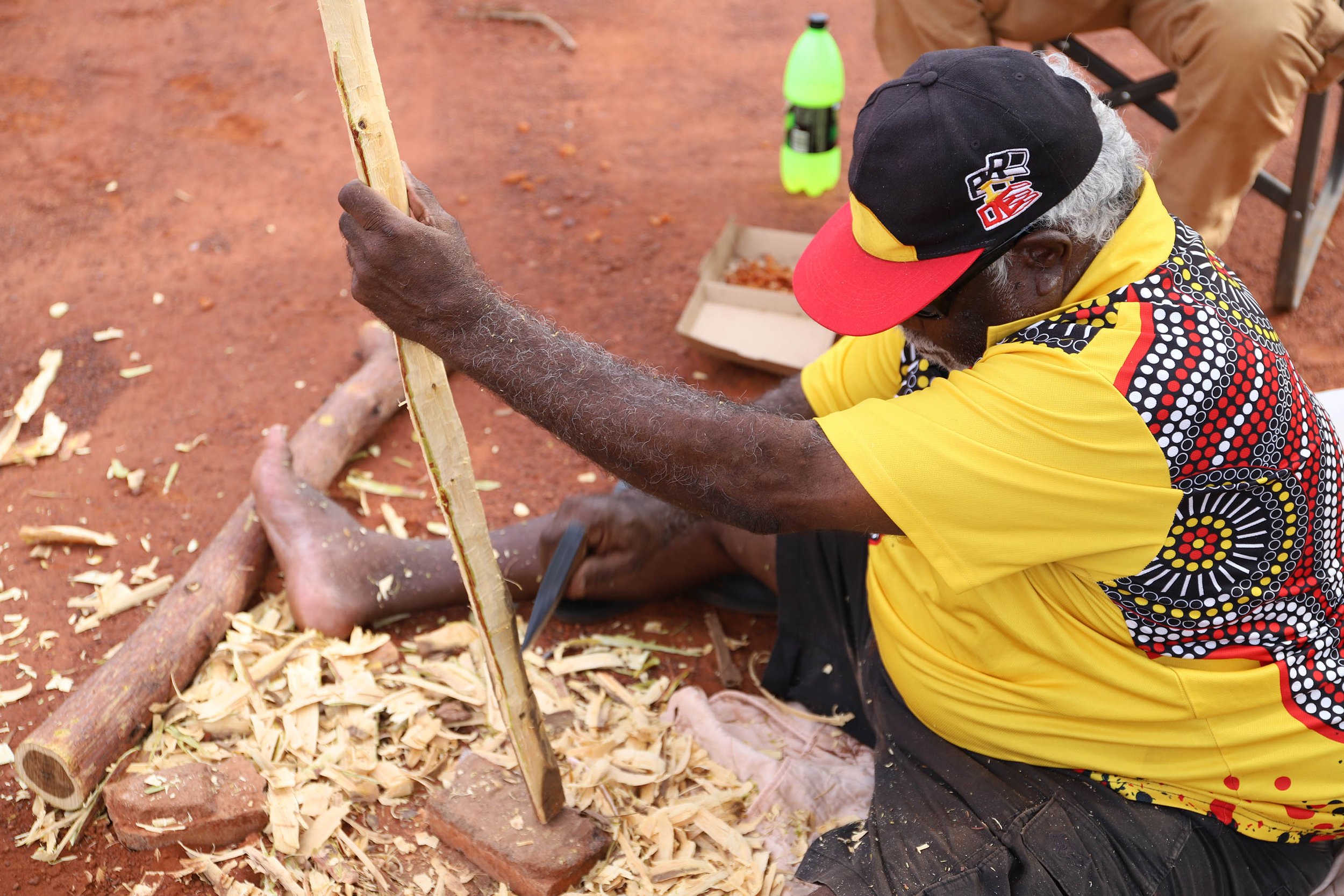Wama Wangka trip to use new carving tools
Country & Culture Support Officer, Mitch Keyer, joined rangers Clifton Girgiba and Norman Sammy (NS) to document wood carving using KJ’s new carving tools purchased with funding from Connect Groups.
Travelling about 50km out from Newman the group began searching for wood to use to carve 'hitting sticks'. The rangers used a chainsaw to cut some branches to the correct size while Mitch got the video equipment up and running, ready to record the process.
NS began, telling stories about how he learnt from his father who described the two different kinds of stick he would be making; why it's important to continue these traditions; and the different uses by Pujiman (desert-born Martu).
Using the milyjirr (red warta) that was gathered in a rocky area by the river and wintamarra (mulga) that was found in an open flat area, Clifton and NS then went on to demonstrate and discuss the process of making pilypin and jurna:
“When you're making a pilypin or jurna, you just have to take it easy, don't rush.
“You can't touch someone else's jurna, unless they give it to you. Keep them with yourself in case, carry a jurna around, the old people used to do it.
“Old people used to take out the dogs and their jurna to go hunting. Nowadays, a lot of people don't know how to make jurna or anything.”
The difference between the two tools Pilypin (or jurtiny) is thinner. Jurna (or kurnti) is thicker. Different trees can be used, including kurarra (wattle/acacia) or wintamarra (mulga), and can also be used to make boomerangs and other tools.
The rangers also mentioned a women's stick, which is longer and called kurturu, and how it is good to get out of town and have something to focus on and do with your hands: “It's a good way to relax and clear your head.”
It’s important to record Pujiman ways and stories so that they can continue to be passed on to younger generations now and into the future.
📸s: gathering warta to carve pilypin and jurna; Clifton Girgiba and Norman Sammy using a chainsaw to cut and prepare wintamarra; warta gathered to make 'hitting sticks’; telling stories while NS carves pilypin; carving jurna.

